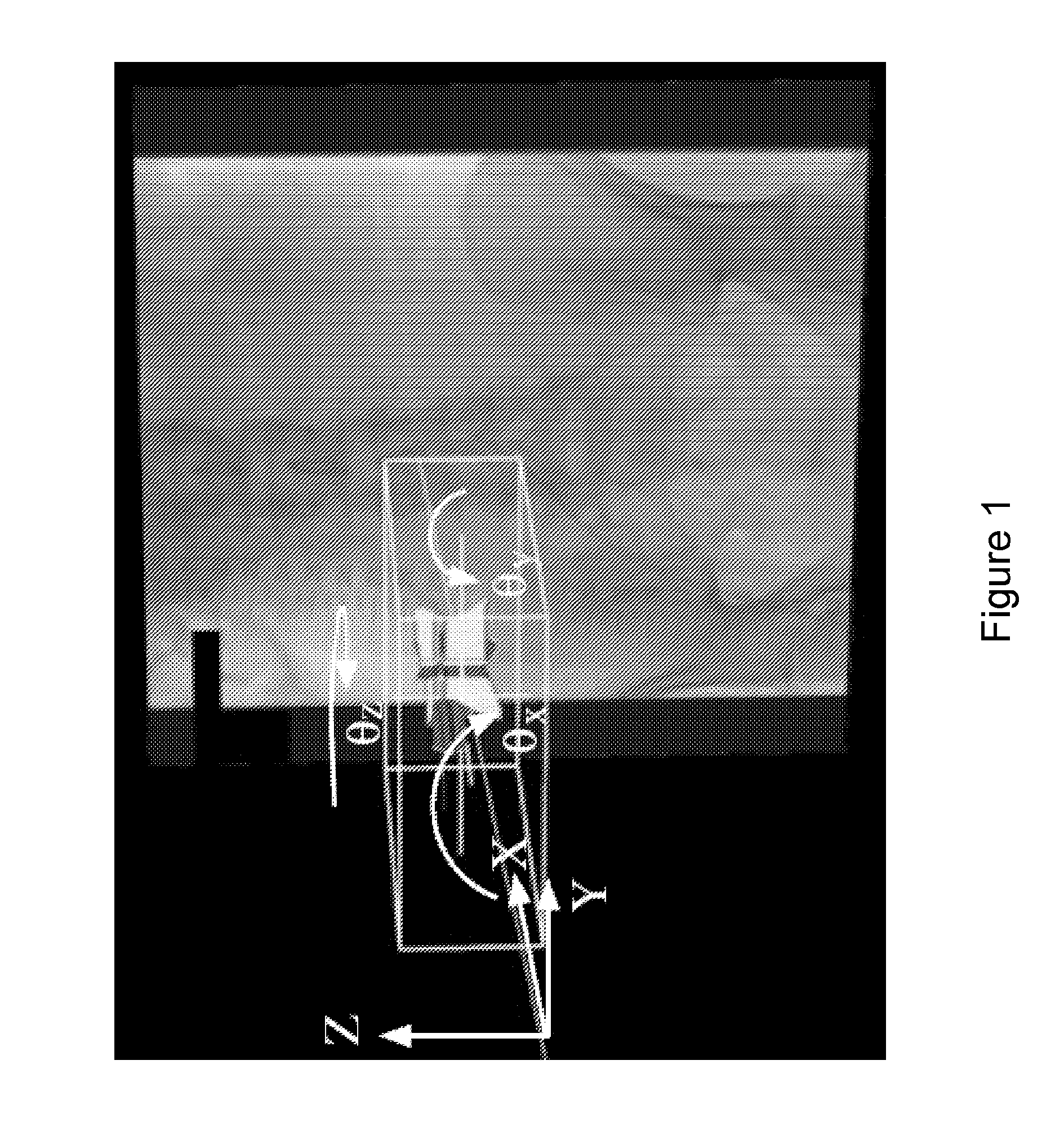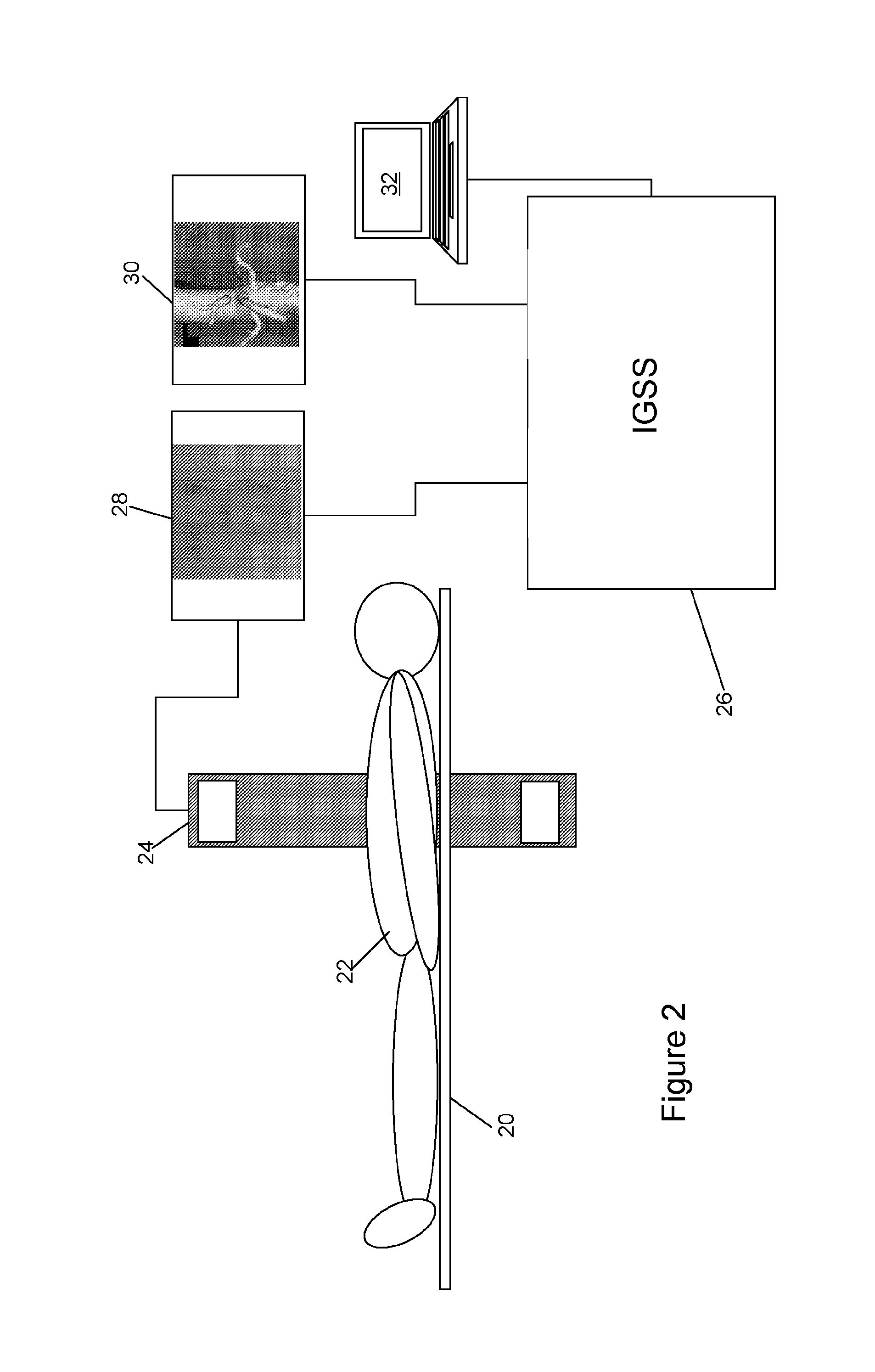Method and system to assist 2D-3D image registration
a technology of image registration and 2d fluoroscopy, applied in image enhancement, instruments, applications, etc., can solve the problems of insufficient 2d fluoroscopy image for a surgeon, inability to accurately identify vertebrae, and inability to accurately register
- Summary
- Abstract
- Description
- Claims
- Application Information
AI Technical Summary
Benefits of technology
Problems solved by technology
Method used
Image
Examples
Embodiment Construction
[0035]The embodiment of the invention to be described has two stages. The first stage comprises image processing that is performed on a pre-operative 3D image obtained prior to surgery. The purpose of the first stage is to obtain characterising feature sets of possible registration features that may be found in the 2D operative image, from several different viewing angles. Once these have been obtained, they may then be used during the second, operative, stage to identify registration features found in the fluoroscopy image, to provide a starting point for registration.
[0036]FIG. 9 shows a general purpose computer system 90 having an output display 92 and user input features such as a keyboard 94 to allow control thereof. The computer comprises CPU 901, video interface 902 to control the display 92, and input interface 903 to receive user input from keyboard (or other input device) 94. Also provided is data storage medium 904, such as hard disk, solid state storage, or the like, upo...
PUM
 Login to View More
Login to View More Abstract
Description
Claims
Application Information
 Login to View More
Login to View More - R&D
- Intellectual Property
- Life Sciences
- Materials
- Tech Scout
- Unparalleled Data Quality
- Higher Quality Content
- 60% Fewer Hallucinations
Browse by: Latest US Patents, China's latest patents, Technical Efficacy Thesaurus, Application Domain, Technology Topic, Popular Technical Reports.
© 2025 PatSnap. All rights reserved.Legal|Privacy policy|Modern Slavery Act Transparency Statement|Sitemap|About US| Contact US: help@patsnap.com



